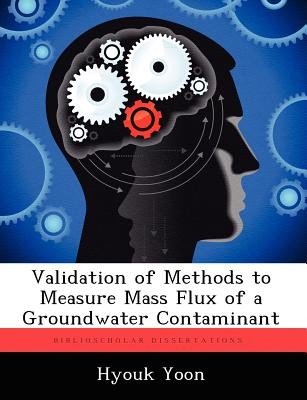
- We will send in 10–14 business days.
- Author: Hyouk Yoon
- Publisher: BiblioScholar
- ISBN-10: 1249592577
- ISBN-13: 9781249592570
- Format: 18.9 x 24.6 x 0.4 cm, softcover
- Language: English
- SAVE -10% with code: EXTRA
Validation of Methods to Measure Mass Flux of a Groundwater Contaminant (e-book) (used book) | bookbook.eu
Reviews
Description
Recently, a number of methods have been developed and subsequently applied to measure contaminant mass flux in groundwater in the field. However, none of these methods has been validated by comparing measured and known fluxes at larger than the laboratory-scale. Recently, a couple of innovative flux measurement methods, the Tandem Recirculating Well (TRW) and Integral Pumping Test (IPT) methods, have been proposed. The TRW method can measure mass flux integrated over a large subsurface volume without extracting water. The IPT method is a simple and easily applicable method of obtaining volume-integrated flux measurements. In the current study, flux measurements obtained using these two methods are compared with known mass fluxes in a meso-scale three-dimensional artificial aquifer. The TRW method is applied using two different techniques. One technique is simple and inexpensive, only requiring measurement of heads, while the second technique requires conducting a tracer test. The IPT method requires use of one or more pumping and observation wells in various configurations. The results of the experiments in the artificial aquifer show that the most expensive technique, the TRW method using tracers, provides the most accurate results (within 15%). The TRW method that relies on head measurements appears not to be a viable flux measurement technique because of the large errors that were observed when applying the technique.
EXTRA 10 % discount with code: EXTRA
The promotion ends in 19d.21:59:22
The discount code is valid when purchasing from 10 €. Discounts do not stack.
- Author: Hyouk Yoon
- Publisher: BiblioScholar
- ISBN-10: 1249592577
- ISBN-13: 9781249592570
- Format: 18.9 x 24.6 x 0.4 cm, softcover
- Language: English English
Recently, a number of methods have been developed and subsequently applied to measure contaminant mass flux in groundwater in the field. However, none of these methods has been validated by comparing measured and known fluxes at larger than the laboratory-scale. Recently, a couple of innovative flux measurement methods, the Tandem Recirculating Well (TRW) and Integral Pumping Test (IPT) methods, have been proposed. The TRW method can measure mass flux integrated over a large subsurface volume without extracting water. The IPT method is a simple and easily applicable method of obtaining volume-integrated flux measurements. In the current study, flux measurements obtained using these two methods are compared with known mass fluxes in a meso-scale three-dimensional artificial aquifer. The TRW method is applied using two different techniques. One technique is simple and inexpensive, only requiring measurement of heads, while the second technique requires conducting a tracer test. The IPT method requires use of one or more pumping and observation wells in various configurations. The results of the experiments in the artificial aquifer show that the most expensive technique, the TRW method using tracers, provides the most accurate results (within 15%). The TRW method that relies on head measurements appears not to be a viable flux measurement technique because of the large errors that were observed when applying the technique.


Reviews